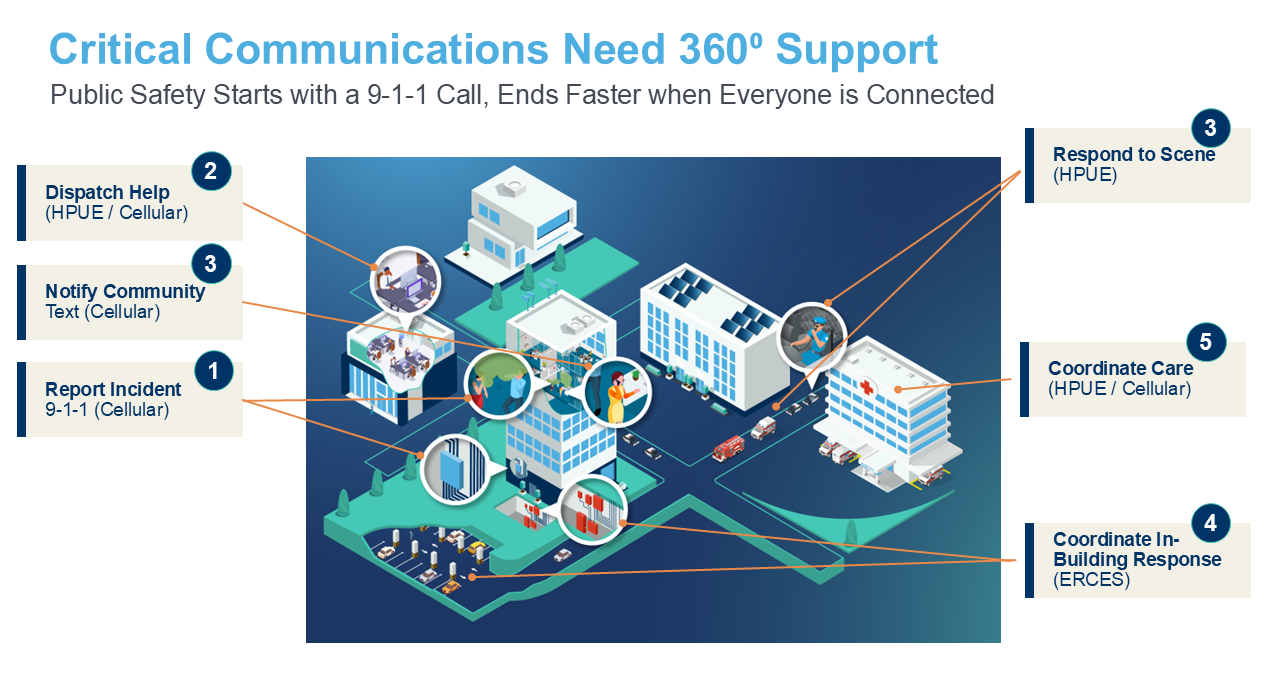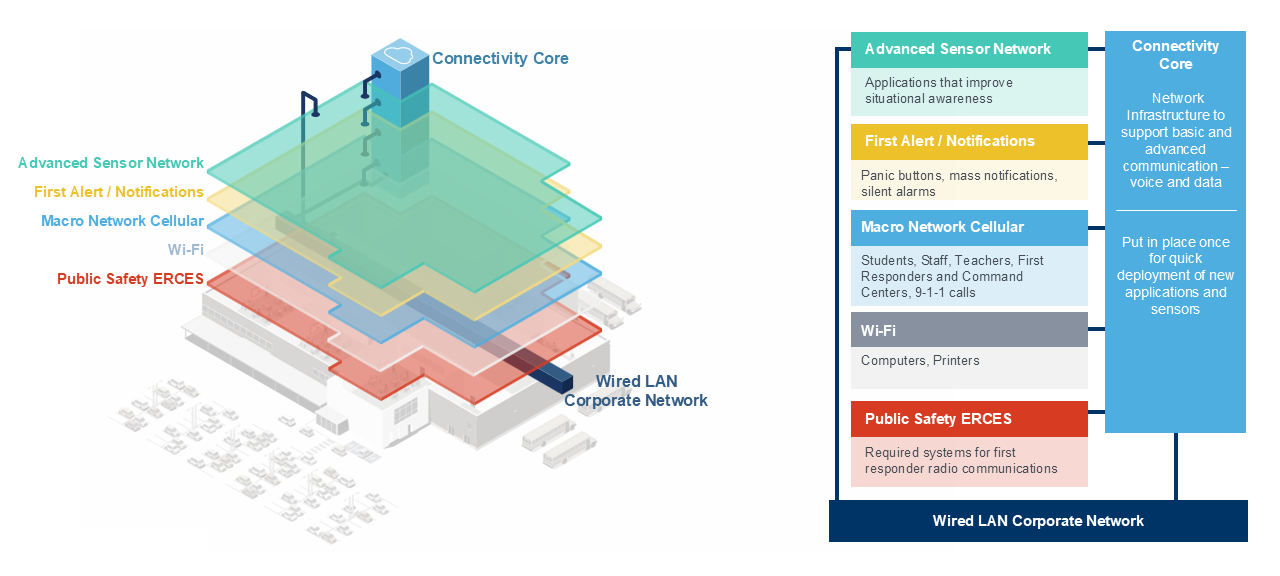What is Alyssa’s Law?
Alyssa’s Law is legislation to improve the response time of law enforcement during emergencies in public schools. It mandates that all public elementary and secondary school buildings be equipped with silent panic alarms that directly notify law enforcement.
Alyssa’s Law is named after Alyssa Alhadeff, a student who died in the Parkland school shooting.
Alyssa’s Law requires public schools to install panic alarms that are directly connected to law enforcement. The goal is to reduce response times so that law enforcement can quickly respond to threats and triage victims.
As the law is enacted state-by-state, there is variation in what is mandated vs. optional as well as the details around specific components of the system. Here are some of the basic elements being called for:
- Silent Alarms
- Emergency Lighting
- Connection to Police
- Panic Buttons, Panic Alert Device, Wearable Panic Device
- Phone or Cellphone in each Classroom
- Two-Way Radio Coverage
- Comprehensive Emergency Operations or Safety Plan
- At Least One [system] in the School
- Equivalent Systems Allowed
- Wired or Wireless
- Construction Guidelines
- Certification of Compliance
Connectivity Saves Lives
Behind Alyssa’s Law is the simple idea that a proper emergency response happens when everyone involved knows what’s going on – as it happens. In any school safety discussion, you’re likely to see words like:
- Alert and/or Automated Alert
- Notification and/or Mass Notification
- Information
- Communication
- Emergency Response
- Situational Awareness
- System Integration
- Coordination and/or Coordinated Response
Every single element relies on one or more communication networks to pass information between or among the parties involved. Putting in place a Connectivity Core is fundamental to any school safety plan. When the parties are connected, critical information can quicky get where it needs to be.
People, Not Systems, Neutralize Threats
Throughout the life cycle of any school emergency there are a lot of people who need information.
- Students, teachers, staff, and others inside the school during the incident
- Parents and families
- School safety personnel
- School administrators
- School district administrators
- Police, fire, EMS and other first responders
- Emergency commanders
- Neighbors
- Media / media relations
No single system can support all the necessary communications in an effective manner – some people can use phones other’s need radio contact. Automated alerts, mass communications, and information from sensors and other monitoring devices communicate differently than people. Right now, in many places, it takes time to get everyone in the communications loop and get the right information in the right place – if schools have the connectivity in place, there is no delay in focusing on the threat.

Connectivity to Support the People at the Scene: School Safety Goals
To fully support all the people likely to show up or be at the scene of a school emergency, there are number of communications systems that need to work together. The goals for an school safety plan should include:
- Meeting code requirements for an ERCES systems – this is the radio network that firefighters and other first responders use. Coverage across the entire site is mission-critical. This was part of issue with nine-eleven response, radios were not working.
- Maintaining cellular connectivity for students, teachers and staff as a primary means of giving and receiving information in an emergency. This technology is what keeps families connected and gives commanders and first responders first-hand information that no system can match. It’s unlikely the macro cellular system, for each of three main operators, would be compromised or overwhelmed. Most emergency response starts with a 9-1-1 call. Cellular networks can also handle data transfer – like texts, streaming, etc.
- Creating a network of first alert systems – this where panic buttons, environmental sensors, security monitoring devices, other detection devices can quickly communicate “something is happening, you need to respond”
- Deploying advanced sensors and systems to aid responders with situational awareness information that will help orchestrate an effective plan. Examples include gunshot detection with location, live streaming from cameras, etc.
Building a Connectivity Core for School Safety: A Multi-Layer Approach
Having a robust design for wireless connectivity means there are primary and secondary communication channels for all, with built-in redundancy.
The Nextivity model for connectivity core designed with school safety in mind features five layers, each designed to handle the needs of specific people on the scene. The layers are:
- Public Safety ERCES for first responder radio communications
- Wi-Fi Network for in-school devices already connected
- Macro Cellular Network for all cellular devices on scene for
individual and mass communications - First Alert / Notifications System to alert authorities, per Alyssa’s law
- Advanced Sensor Network for situational awareness during response

When planning and implementing a comprehensive communications network, there are some things to consider, especially if planning to rely on Wi-Fi:
- Wireless systems can interfere with each other – you need to install systems that work together and will not cancel each other out.
- Weak signals can equal no signals in an emergency. You need systems that reliably cover the entire site. In an emergency, there could be people moving, hiding, taking cover etc. – the places they are likely to go are the hardest places for a signal to get.
- Consider capacity. Wi-Fi networks can be overwhelmed, the macro network will not be. This is also why there are separate channels for first responders – radios, FirstNet cellular (Band 14 +all other AT&T bands) that give priority to emergency personnel.
- People move around during an emergency – Wi-Fi has limited range. As school sizes increase, and for campuses with multiple buildings, you need technology with a continuous signal.
- A small amount of information can make a big difference. Knowing where to go and where in a building as an incident is unfolding saves time and saves lives. Cellular devices and sensor networks can provide location-based information.
More information on specific Nextivity products and services key to implementing Alyssa’s Law are available here:
Education Page
Alyssa’s Law IntelliBrief
QUATRA 4000c, Smart Server Antenna, and Gunshot Detection Service



